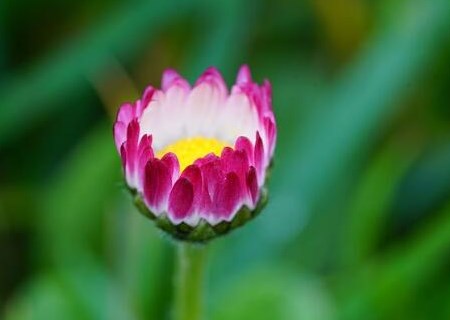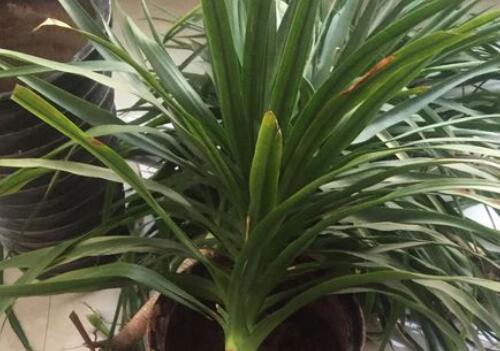How much is Pinellia ternata per jin? How to plant it? What is the medicinal value?
Pinellia ternata, also known as Diwen, Shoutian, etc., belongs to the order Araceae. It is widely distributed in the Yangtze River Basin, Northeast China, North China and other regions. The medicinal plant has the function of dryness and dampness and resolving phlegm, reducing adverse reaction and stopping vomiting, raw use to eliminate furuncle and swelling, and is used by veterinarians to treat throat lock. It is also distributed in Xizang, about 3000m above sea level. So how much is Pinellia ternata per jin? How to plant it? What is the medicinal value? It is understood that one kilogram of Pinellia ternata costs 150 RMB250 per kilogram.

1. Planting techniques of Pinellia ternata
1. Land selection and preparation
It is suitable to choose sandy loam or loam soil with moist and fertile soil, strong water and fertility conservation, loose texture, good drainage and irrigation, neutral reaction, or gentle slope mountain area with half shade and half sun. In order to plant Pinellia ternata in the plain area, it is necessary to choose the land which can be irrigated and drained, and the drainage ditch must be dug before planting. After selecting the land, from October to November, the 20cm of the land will be turned deeply, and the gravel and weeds will be removed to make it weathered.
2. Methods of reproduction
One is tuber propagation. Pinellia ternata has been cultivated for 2-3 years, and the underground tubers can be excavated after falling seedlings in June, August and October every year. The medium and small tubers with thick transverse diameter 0.5~10cm, strong growth and no diseases and insect pests were selected as seed, and the small seed stem was better than the big one. Mix it with moderately dry and wet fine sand, store it in a cool and ventilated place, and plant it in winter or spring of the following year. It is better to plant in spring, and the yield is low in autumn and winter.
The second is bulblet propagation. In summer and autumn, mature bulbs under petiole were used for strip planting, row spacing 10~16cm, plant spacing 6~10cm, hole opening, 3-5 plant buds per hole, thick 1.6cm covered with soil. At the same time, the application of appropriate amount of mixed fertilizer can not only promote the germination and growth of bulbs, but also increase the yield of mother tubers.
Third, seed reproduction. Pinellia ternata, which is more than two years old, can blossom and bear fruit one after another from early summer to autumn and winter. this method is used in seedling shortage or breeding. About 10 days after flowering in autumn, mature seeds were collected and stored in wet sand.
3. Field management
When the emergence of seedlings reaches about 50%, the plastic film should be removed to prevent the temperature in the film from being too high to burn seedlings. Before removing the film, open the ventilation and heat dissipation from both sides of the box at noon, seal it in the evening, refine the seedlings for several days in a row, and then remove them all. After emergence, loosen the soil and get rid of weeds in the field at any time. After removing the film, the ground should be watered in time to loosen the soil and preserve soil moisture. More water is needed during the bulb expansion period, so the soil should be kept moist and loose. Stagnant water should be excluded in the rainy season. Bulb growth needs to cultivate soil. From June to August, mature buds and seeds fall to the ground one after another. At this time, soil cultivation and topdressing should be carried out twice. During the growing period, all the buds are removed to promote the tuber growth and hypertrophy, so as to increase the yield. After the wilt of Pinellia ternata in November, the aboveground stems and leaves and the fallen buds were collected, in which the pearl mulch was laid flat on the surface of the high border.
4. Pest control
White star disease: occurs from April to May. At the initial stage of the disease, 50% methyl thiophanate wettable powder 500 times, or 50% carbendazim wettable powder 500 times, or 50% carbendazim wettable powder 500 times, once every 7 to 10 days, a total of 2 times 3 times.
Leaf spot disease: at the initial stage of the disease, spray 1 120 Bordeaux solution or 65% Dysen zinc 500x solution, or 50% carbendazim 800g 1000x solution, or methyl topiramate 1000 times solution, spray once every 7 days for 3 times in a row, or spray garlic 1kg with water 20~25kg at the same time, remove the diseased plants and burn them.
Control of red diamondback moth: spray with 80-1000 times liquid of 90% crystal trichlorfon, once every 5 to 7 days, for 2 times in a row.
Second, the medicinal value of Pinellia ternata
Dryness and dampness, resolving phlegm, reducing adverse events and stopping vomiting, dispelling ruffles and dispersing knots. For phlegm cough and asthma, phlegm dizziness, wind phlegm vertigo, phlegm syncope headache, vomiting nausea, epigastric stuffy, plum nuclear gas; raw external treatment of carbuncle swelling phlegm nuclear, veterinarian to treat throat lock.
Third, Banxia Houbu decoction
Banxia Houpu decoction, which originates from synopsis of the Golden Chamber, is a special prescription for the sensation of foreign bodies in the throat.
"the Golden Chamber woman miscellaneous pulse syndrome and treatment 22" pointed out: "if there is burning in the pharynx of a woman, Pinellia Magnolia decoction is in charge." The so-called "scorching" is often used in traditional Chinese medicine to describe the sputum in the throat, which cannot be spit out or swallowed. It is called "plum kernel qi" in the ancients, especially in women. It is characterized by foreign body sensation in the throat, dysphagia, poor emotion, chest tightness, white and greasy tongue coating and smooth pulse. This syndrome is more common in pharyngeal neurosis and chronic pharyngitis in modern medicine.
In this prescription, there are many pungent, warm and bitter products, which are only suitable for phlegm-qi accumulation without heat. If you see that zygomatic red, bitter mouth, red tongue and less fur belong to qi depression and fire, Yin injury and less fluid, although it has the characteristics of plum core qi, it is not suitable to use this prescription.
[prescription alias] Houpu decoction, Daqiqi decoction, Siqi decoction, Houpu Banxia decoction, Qiqi decoction, Siqi drink
[Fang Yuan] Volume of synopsis of the Golden Chamber.
[composition] one liter of Pinellia ternata (130g) Magnolia officinalis (45g) Poria cocos (60g) ginger (75g) perilla leaves (30g)
[Fang GE] Pinellia Hou Pu phlegm Qi Shu, Poria cocos and ginger total perilla, add jujube with the same decoction name of four or seven, phlegm coagulation and qi stagnation can be removed.
[indications] if there is burning in the pharynx of a woman; joy, anger, sadness, thought, worry, fear, surprise become phlegm salivation, shaped like broken catkins, or like plum nucleus, between the throat, can not come out, can not swallow, these seven qi also do; or epigastric fullness, dyspnea, or phlegm salivation, asthma, or because of phlegm and drink knot, vomiting and nausea. The tongue coating is white or greasy, the pulse string is slow or smooth.
[efficacy] dispersing qi and dispersing knots, reducing adverse events and resolving phlegm.
[usage] boil four liters of water with seven liters of water, four times a day, three days and three nights. [note: this prescription is from Zhang Zhongjing, a unit of measurement before the Han Dynasty, 1 liter of water = 200 milliliters, 1 liter of Pinellia ternata = 130 grams, one or two = 15 grams]
[note] Hou Pu Tang (Volume 124 of Sheng Ji Zonglu), Da Qi Tang (Volume 8 of "three causes"), Siqi Tang, Hupu Banxia Tang ("Yi Jian Fang"), Qiqi Tang ("Zhi Zhi" Volume 5), Siqi Yin (Volume 4 of "Xingyuan").
Time: 2019-03-17 Click:
- Prev

What are the seed planting methods of Xiaoli flower (also known as Xiao Li Chrysanthemum)? What's the value? Does it bloom in winter?
Xiaoli is a perennial bulbous herb, which has low plants and long florescence. It is an excellent ground cover plant. It can also arrange flower beds, flower borders, etc., and can be used as potted ornamental plants or cut flowers.
- Next

Can I plant dragon blood trees at home? Is it poisonous? How to water aquaculture? How to trim the bifurcations?
Dragon blood tree, also known as: bleeding tree, blood-activating holy medicine, plant birthday. Also known as horse mule sugarcane tree, narrow leaf dragon blood tree, long flower dragon blood tree, not just tree, bamboo ginseng and so on. Can we plant dragon blood trees at home? Is it poisonous? How to water aquaculture? How to trim the bifurcations? Can we plant dragon blood trees at home?
Related
- Fuxing push coffee new agricultural production and marketing class: lack of small-scale processing plants
- Jujube rice field leisure farm deep ploughing Yilan for five years to create a space for organic food and play
- Nongyu Farm-A trial of organic papaya for brave women with advanced technology
- Four points for attention in the prevention and control of diseases and insect pests of edible fungi
- How to add nutrient solution to Edible Fungi
- Is there any good way to control edible fungus mites?
- Open Inoculation Technology of Edible Fungi
- Is there any clever way to use fertilizer for edible fungus in winter?
- What agents are used to kill the pathogens of edible fungi in the mushroom shed?
- Rapid drying of Edible Fungi

